Modern Family "Connection Lost" iPhone episode behind-the-scenes
What defines the Modern Family? If it's ABC's popular sitcom of the same name, then that's a question spanning six seasons, and now adding Apple to its roster of same-sex and inter-generational marriage, awkward siblings, and cross-cultural differences. For upcoming episode "Connection Lost," however, the challenge got even greater: shot almost entirely on iPhone 6 in just two days, processed on a Mac Pro, and taking place entirely on the desktop of OS X Yosemite. I headed to 20th Century Fox studios in LA to preview what co-author and director Steve Levitan describes as "the most labor-intensive episode" that the Modern Family team has ever attempted.Modern Family is no stranger to Apple products. Back in 2010, the show memorably wove the then-new first generation iPad into an episode, playing off the extreme scarcity of the best-selling tablet for a storyline.
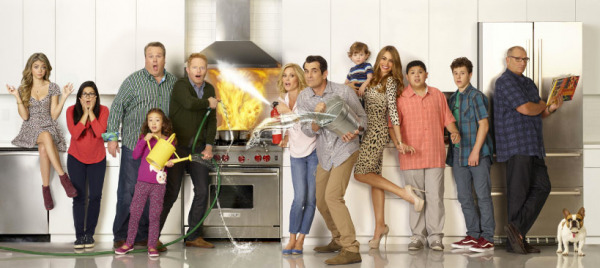
The iPad's starring role – that involved filming it before it was officially on the market – was in no small part because of Levitan's own enthusiasm for Apple and its products. Fast-forward five years, and it's that same addiction which prompted Yosemite's starring role in season six.
"Connection Lost", episode sixteen in the current season, airs on Wednesday, February 25 at 9pm ET. You can expect it on iTunes and Hulu Plus the following day, and then Hulu Classic on March 5th.
"The basic idea, [came from] my two daughters at college – we do a lot of FaceTiming," Levitan, who wrote the episode with co-executive producer Megan Ganz, explains. "One day, I was on my computer, and I was working on something and I think I had some emails open, and some websites, or whatever else I was doing online."
"And then my daughter showed and then I could not only see her, but that I could see me, and I could see something going on behind my, my wife or someone, and I realized on this screen you could tell so much about my life. The original idea was from there: wouldn't it be cool to do an episode."
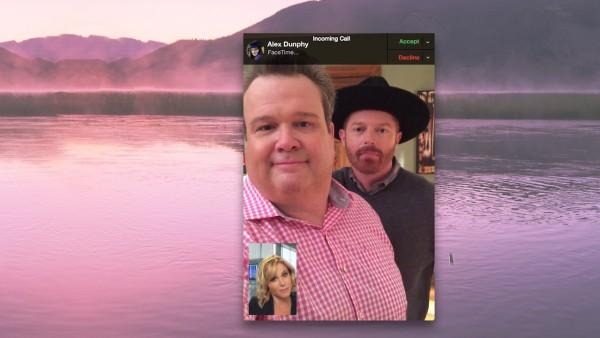
It's not the first time a story has been told through a computer screen. In fact, when Levitan mentioned the plan to his daughters, one flagged up a Canadian group called Shy Kids Band, which won several film awards with a seventeen minute movie called "Noah" that took a similar approach. Levitan even contacted the group, and for a while it looked like they'd collaborate with the Modern Family team, until another project prevented it.
Instead, Levitan, Ganz, and a few others looked for a potential plot themselves, effectively starting with the medium and working backwards to figure out the message.
"[We] sat in a room and started looking for a story to sustain it," Levitan says. "How are we ever going to get everybody on there? What's the reason it has to be on a screen? Why doesn't she have her phone? Where is she? All these different things."
"We kind of stumbled across this idea pretty early, I must say, and then once we started talking about it, it was amazing. The problem actually became that it was too dense, and it was too much and we had to start thinning it out."
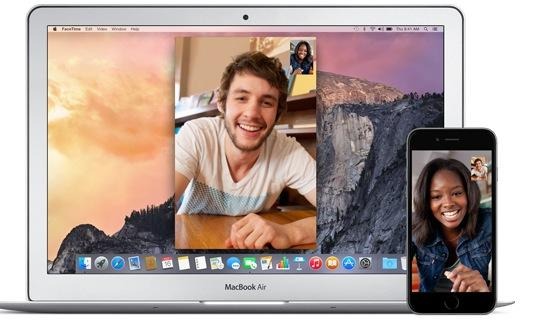
The final storyline sees Claire Dunphy's MacBook take center-stage, with Yosemite and the various Apple services like FaceTime featuring in a hunt for eldest daughter Haley that quickly evolves into password-guessing, fake Facebook profiles, and online stalking.
Happily, the tech injection hasn't squeezed out the comedy. I won't spoil the punchline – I saw it coming, but it was still entertaining to see how the near-real-time episode hurtled toward delivering it – but things like video calls and Find My iPhone feel instrumental in reaching it, rather than levered in for their own sake.
"This has been, I could easily say, the most labor-intensive episode we've ever done, and the post-process will probably take us until the day before it airs," Steve Levitan, co-creator & executive producer, Modern Family
Turns out, that was no easy challenge. Filming was actually far quicker than usual – just two days, albeit a month apart, versus the usual five day schedule – but demanded new approaches by the camera team, the actors, and the post-processing team.
"Everything was shot entirely on either iPhone 6, or the new iPads, or one or two small scenes that were shot using MacBook Pro," Levitan explains. "Everything was shot using that technology: it would be silly to shoot amazing footage and then dumb it down, that wouldn't look quite right."
Even the point of view from a front-facing camera turned out to present challenges when scaled across full days of filming, the actors' arms getting strained trying to hold up the iPhones. Instead, editor Tony Orcena explained to me, the cameraman would hold the smartphone and then the actor would hold the crewmember's arm, keeping the perspective right in the process.
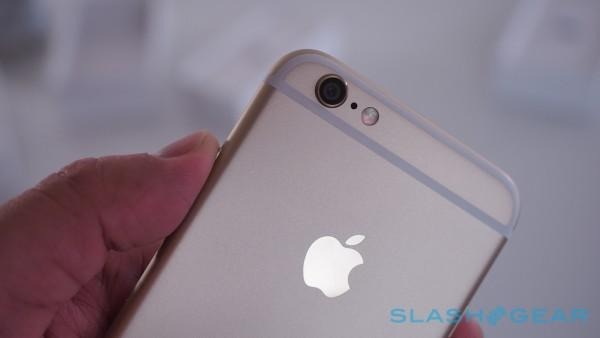
The success of Orcena's touch is typically judged by how invisible the results are, squeezing thousands of edits into a single episode. "Usually it's very functional, maybe Manny says something funny and we wanted to punch into him but we didn't, so I do a little zoom-in joke," he told me when I spoke to him following the screening. That, however, doesn't work when you're using a smartphone camera.
"I can't do a lot of tricks that I would normally do. If the camera's locked-off I can split two takes in half, and use two completely different takes and splice them together. But here nothing would ever match because the camera's always bouncing," he says. "So, it's much simpler in its execution, but sometimes then, when there's something you have to solve, or make work, or you want to play a joke another way, there's like fifty options I'd normally have that are off the table now. So it's like, okay, solve this a different way."
The cynic watching – and I confess, I wondered it myself after a few minutes of staring at Yosemite on the big screen – might suspect Apple's checkbook was involved. After all, the Mac probably deserves a Special Guest Star credit given the significance of the role it plays. Just about every one of Apple's key talking-points for the OS gets some screen time: not only FaceTime, but Spotlight Search, Find My iPhone, iCloud, iPhoto, iTunes, and more. Turns out, though, that just like that iPad episode, no cash exchanged hands, just some loaned equipment.
"There's no product placement, this came from life and it made sense," Levitan says. "We called Apple ... and sort of informed them about what we were doing, and they of course loved the idea. They provided the iPhones for us, we went through a lot of them. We had a lot of them on set, because it was a very unusual shooting day."
"95-percent of the episode we shot over two days, but we often had three sets going at once. The actors could hear each other but not see each other, so there was a lot of stuff going on," Levitan explains. After that, it was time to put an off-the-shelf Mac Pro through its paces. "As fact as that machine is, which is the fastest consumer computer you can get, we still taxed it. We were really pushing it."
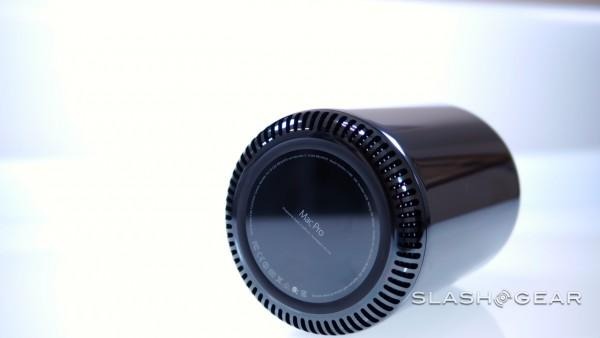
Motion Graphics Producer John Brown was responsible for that, and whatever time may have been shaved off during shooting, it was more than made up for with the four months (and counting) of editing. That started with a complete reconstruction of OS X.
"What you're seeing on-screen is all handmade," Brown explains, "I had to basically counterfeit the Yosemite interface. We originally tried it with screen captures, but when you really push into it, it breaks up, it starts looking jaggy."
Instead, he rebuilt the Yosemite UI only with everything roughly four times bigger, so that close-ups wouldn't look crunchy or blocky. Unfortunately, while Apple might have been happy to throw a box-full of iPhones at the Modern Family team, the Yosemite coders weren't going to make Brown's work easy.
"I started building assets on this episode when Apple's Yosemite was still in beta," the producer laughs. "So I would build the entire OS in that state, then as we were going along they would release an update, so I would have to go through and change, like, FaceTime. It was just these iterative updates that I had to go through and try to keep everything consistent."
"FaceTime is seamless. As much as Google Hangouts has a beautiful interface, it's just not the same. We needed the nature of that: it's just on everybody's phone. Honestly, think there are other companies making amazing products. We needed more of the services. FaceTime was the key: it was just there on everybody's phone" Steve Levitan, co-creator & executive producer, Modern Family
Eventually, the designers called a halt to that game of chase, and Brown picked an update to stick at. That wasn't before more than a few sleepless nights of unexpected edits, however.
"A little change like the way that FaceTime rotates from portrait to landscape, and then I'll come in the next morning and John will have bags under his eyes, like, "they updated!"," co-executive producer and episode co-writer Megan Ganz recalled.
Brown, along with Orcena, had worked on similar projects before; in fact, they each helped with Google's search-themed adverts for Google+ back when the social network was in its infancy. The scale of the detail in the Modern Family episode was another level up, however.
Cast and crew photos were used for mocked-up Facebook profiles and fake adverts, while Ganz actually wrote an entire Yale application essay for character Alex, even though it's only on-screen for scant seconds. There are plenty of in-jokes and show references, too.
"On the Yahoo News page there's an add for Crocktopus 4," Ganz points out, "which was a movie Claire and Phil went to see in Season 2. It's loaded with little bits like that for people who want to stop and look at it."
"We had to cut off at an update, so I'm sure someone on Reddit will be, like, "that's Yosemite, y'know, 10.2"" John Brown, motion graphics producer, Modern Family
The risk of building an episode around a single, unusual storytelling idea is that it can so easily end up seeming like a gimmick. Levitan, though, sees it differently: the culmination, perhaps, of a lingering question that goes to the heart of the show's premise.
"If you talk about Modern Family, you know what's "modern" about Mitch and Cam; you know Jay and Gloria, that's a cross-cultural, and cross-generational relationship. What's modern about the Dunphy's?" he asks, rhetorically. "One of the things I've always said is that, look at the way they communicate."
"From the very beginning: the very first episode, Hayley says – one of the first lines out of her mouth is – they've been calling her for breakfast or something, and she's, like, "why are you yelling, why not just text me? This is how families are communicating today. I see it in my family all the time. How can we use this to tell the story?"
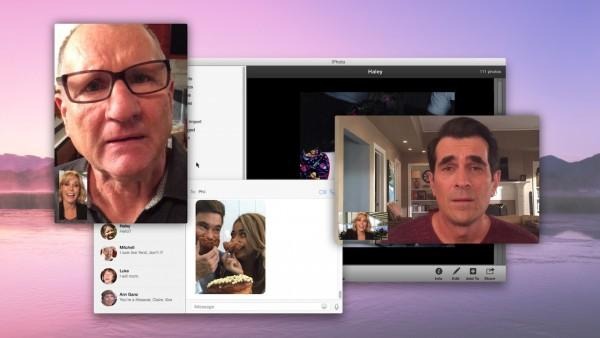
While Levitan, Ganz, and the team are all clearly happy with how the episode has turned out, it's not necessarily something they want to do again any time soon.
"We have done things like this before, we have [used] iPhone footage. But whatever convenience we had from using the small camera was more than eaten up by what we had to go through in post [processing]," the director points out. "I think there will be opportunities going forward because of the way the show is evolving, and characters going off to school and that sort of thing, that will provide opportunities for something maybe not as ambitious as this."
"We're sort of in an age now where we have too much information, and sometimes it can lead us down some pretty crazy paths" Megan Ganz, co-executive producer and writer, Modern Family
It won't be the last time tech plays an starring role, either. "We have an upcoming device in the season-ender," Levitan teases, "which will involve technology, that I don't want to share yet. You never know."
For the moment, though, the jury is out until later in the month, when the Apple-themed episode airs and the reviewers have their say. Whether the frenetic plot strikes a chord with them or not, the Modern Family team is confident that their digital recreation of a desktop many of us use without comment every day is beyond reproach.
"We tried not to dumb it down," Levitan concludes. "There's probably more going on than people could take in from one viewing, and maybe you're not getting every single little thing, but if it takes a couple of times to get every little detail, then that's fine by us."
Modern Family "Connection Lost" airs on ABC on Wednesday, February 25 at 9pm ET. If you're an iTunes season subscriber or a Hulu Plus subscriber it should be available to view the day after, while Hulu Classic will get it eight days later, on March 5th.
